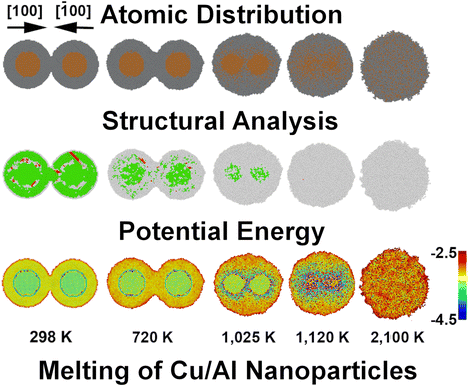Melting and solidification behavior of Cu/Al and Ti/Al bimetallic core/shell nanoparticles during additive manufacturing by molecular dynamics simulation |
| |
| Authors: | Farzin Rahmani Jungmin Jeon Shan Jiang Sasan Nouranian |
| |
| Institution: | 1.Department of Chemical Engineering,University of Mississippi,University,USA;2.Department of Mechanical Engineering,University of Mississippi,University,USA |
| |
| Abstract: | Molecular dynamics (MD) simulations were performed to investigate the role of core volume fraction and number of fusing nanoparticles (NPs) on the melting and solidification of Cu/Al and Ti/Al bimetallic core/shell NPs during a superfast heating and slow cooling process, roughly mimicking the conditions of selective laser melting (SLM). One recent trend in the SLM process is the rapid prototyping of nanoscopically heterogeneous alloys, wherein the precious core metal maintains its particulate nature in the final manufactured part. With this potential application in focus, the current work reveals the fundamental role of the interface in the two-stage melting of the core/shell alloy NPs. For a two-NP system, the melting zone gets broader as the core volume fraction increases. This effect is more pronounced for the Ti/Al system than the Cu/Al system because of a larger difference between the melting temperatures of the shell and core metals in the former than the latter. In a larger six-NP system (more nanoscopically heterogeneous), the melting and solidification temperatures of the shell Al roughly coincide, irrespective of the heating or cooling rate, implying that in the SLM process, the part manufacturing time can be reduced due to solidification taking place at higher temperatures. The nanostructure evolution during the cooling of six-NP systems is further investigated. |
| |
| Keywords: | |
| 本文献已被 SpringerLink 等数据库收录! |
|

